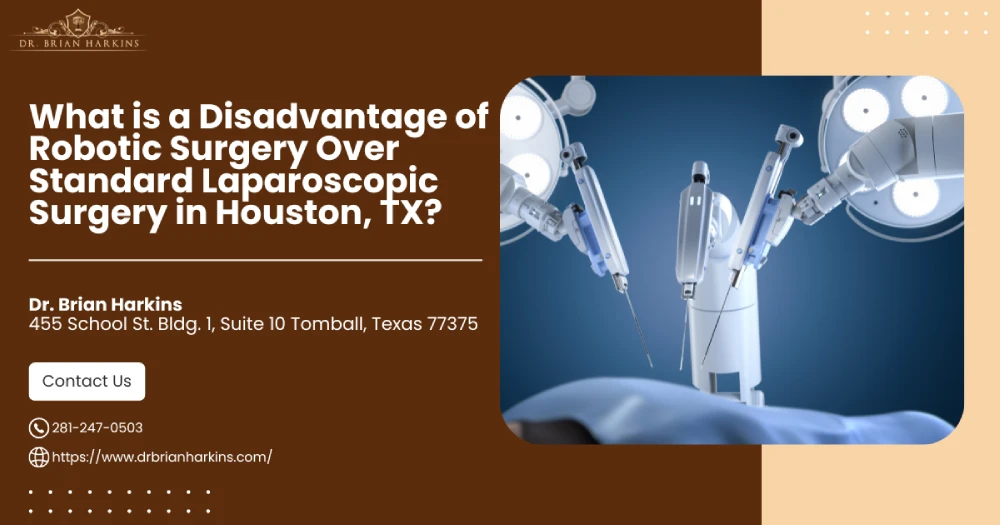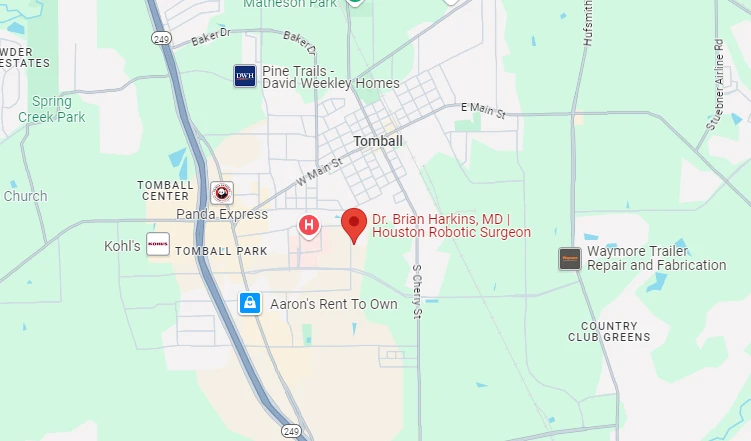
As robotic surgery keeps grabbing headlines for precision, smaller scars, and gentler fixes—but is robotic surgery better in every situation? When we compare robotic surgery with traditional laparoscopic surgery, one clear disadvantage emerges: extra time in the operating room. This article explains why that happens, looks at the cost of robotic procedures, and offers guidance for patients choosing a robotic or laparoscopic path in Houston.
So, what is a disadvantage of robotic surgery over standard laparoscopic surgery in Houston, TX? The most consistent downside reported by both patients and clinicians is increased operating room time, which can affect anesthesia risks, hospital scheduling, and out-of-pocket costs.
| Feature | Robotic Surgery (Houston) | Standard Laparoscopic Surgery |
|---|---|---|
| Incision Size | 5–12 mm (minimally invasive) | 5–12 mm (minimally invasive) |
| Instrument Control | 7-degree wristed da Vinci robotic arms | Straight, fixed laparoscopic instruments |
| Visualization | HD 3-D console | HD 2-D monitor |
| Typical Operating Time | 20–50 minutes longer | Baseline |
| Hospital Costs | Higher (robot maintenance & disposables) | Lower |
| Learning Curve | 20–50 cases | 10–20 cases |
| Houston Availability | Memorial Hermann, Methodist, HCA, MD Anderson | Universal |
Houston now ranks among America’s busiest hubs for robotic colorectal surgery, robotic cholecystectomy, and cancer surgery. Baylor College of Medicine and MD Anderson Cancer Center routinely publish data comparing robotic-assisted vs laparoscopic outcomes in thousands of patients who underwent laparoscopic or robotic techniques—evidence that fuels constant refinement of robotic surgical protocols.
The robotic system translates precise hand motions into micromovements of pencil-thin instruments. Four robotic arms—camera, grasper, energy device, and retractor—dock into ports placed through tiny incisions. The goal mirrors any other minimally invasive surgery: achieve the same or better results than open surgery while sparing tissue.
Despite these perks, Houston registry data confirm that robot-assisted surgery often outlasts conventional laparoscopic surgery. Whether it’s a robotic-assisted laparoscopic cholecystectomy or a robotic colorectal resection, extra minutes pile up for docking, instrument exchanges, and console navigation.
For a healthy patient, 30 more minutes inside the OR may be negligible. Yet for anyone with COPD, heart failure, or diabetes, shorter anesthesia is statistically safer. High-quality studies on the comparative safety of robotic-assisted vs laparoscopic surgery emphasize evaluating your personal risk profile.
The most consistent disadvantage of robot-assisted vs laparoscopic surgery in Houston is a longer operation—which snowballs into slightly higher anesthesia risk and steeper hospital charges. For complex anatomy or intricate suturing, the robot’s benefits may outweigh those minutes; for straightforward cases, a speedy conventional laparoscopic surgery wins. Discuss both routes, compare costs, and decide which minimally invasive procedure aligns with your health goals.
One of the main drawbacks of robotic surgery compared to standard laparoscopy is longer operating time, which can lead to extended anesthesia exposure and higher hospital fees. While the robot offers impressive precision, this extra time doesn't always translate into better outcomes—especially for routine procedures.
Multiple randomized trials show hospital stays are comparable—around three to five days for elective colorectal resections. Some Houston centers report a half-day advantage with robotic surgery, but insurers view both as minimally invasive procedures with near-identical discharge timelines.
A robotic cholecystectomy averages $1,000–$1,400 more in facility fees because of disposable instruments and longer OR time. Professional surgeon fees rarely differ. Always ask for a written estimate to see if your insurance covers the robot’s added cost.
Yes. Studies on robotic surgery in the treatment of rectal cancer show conversion rates drop from 10 % with laparoscopy to 2–4 % with robotics. Fewer conversions can translate into faster recovery and lower postoperative pain.
Generally, yes. Surgeons often need 20–50 robotic cases to match their laparoscopic speed and confidence, whereas laparoscopy may require only 10–20 similar cases. A high-volume robotic surgeon is therefore crucial for optimal results.
The robotic arms articulate like a human wrist, offering seven degrees of freedom versus the two or three in rigid laparoscopic tools. This dexterity enables precise intracorporeal knots, which is vital in bariatric, colorectal, and urologic reconstructive work.
Yes—operations deep in the pelvis (e.g., low rectal cancer), complex ventral hernias requiring extensive suturing, and prostatectomies benefit significantly from robotic articulation and 3-D visibility, often yielding better margins and functional outcomes.
Early data indicate robotic patients may need 10–20 % less opioid medication in the first 48 hours. The difference is attributed to precise dissection and reduced instrument torque on abdominal walls, although proper multimodal pain management still matters.
No. Robots expand, not restrict, minimally invasive options. Nearly every conventional laparoscopic procedure—gallbladder, hernia, colectomy—can also be performed robotically if equipment and expertise are available.
In obese populations, studies comparing robotic-assisted vs laparoscopic cholecystectomy show similar bile-duct injury rates but slightly lower wound infection rates with robotics. The enhanced maneuverability in thick abdominal walls may explain the modest benefit.


Dr. Brian Harkins is a renowned surgeon specializing in advanced, minimally invasive, and robotic surgical techniques. With a dedication to innovation and personalized patient care, he has transformed countless lives by delivering exceptional outcomes.

I want a website like this, where do i start?